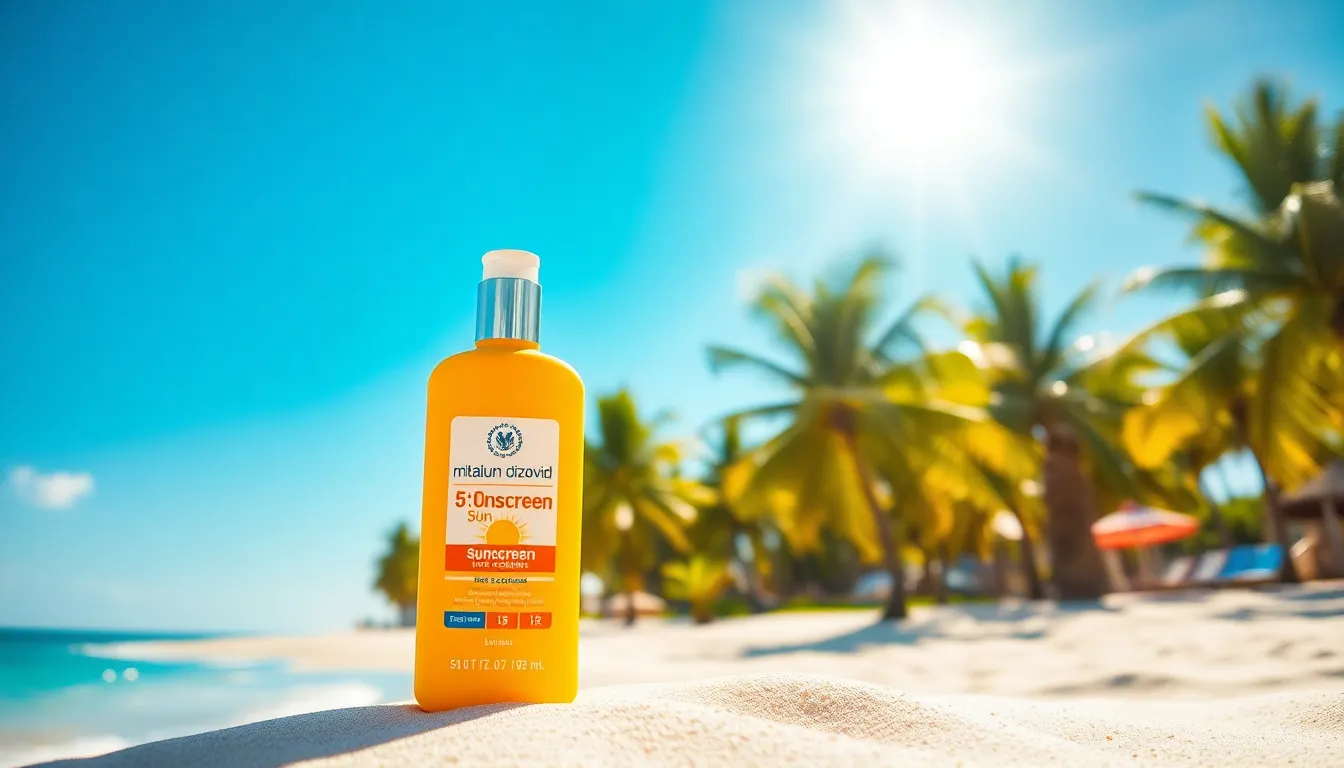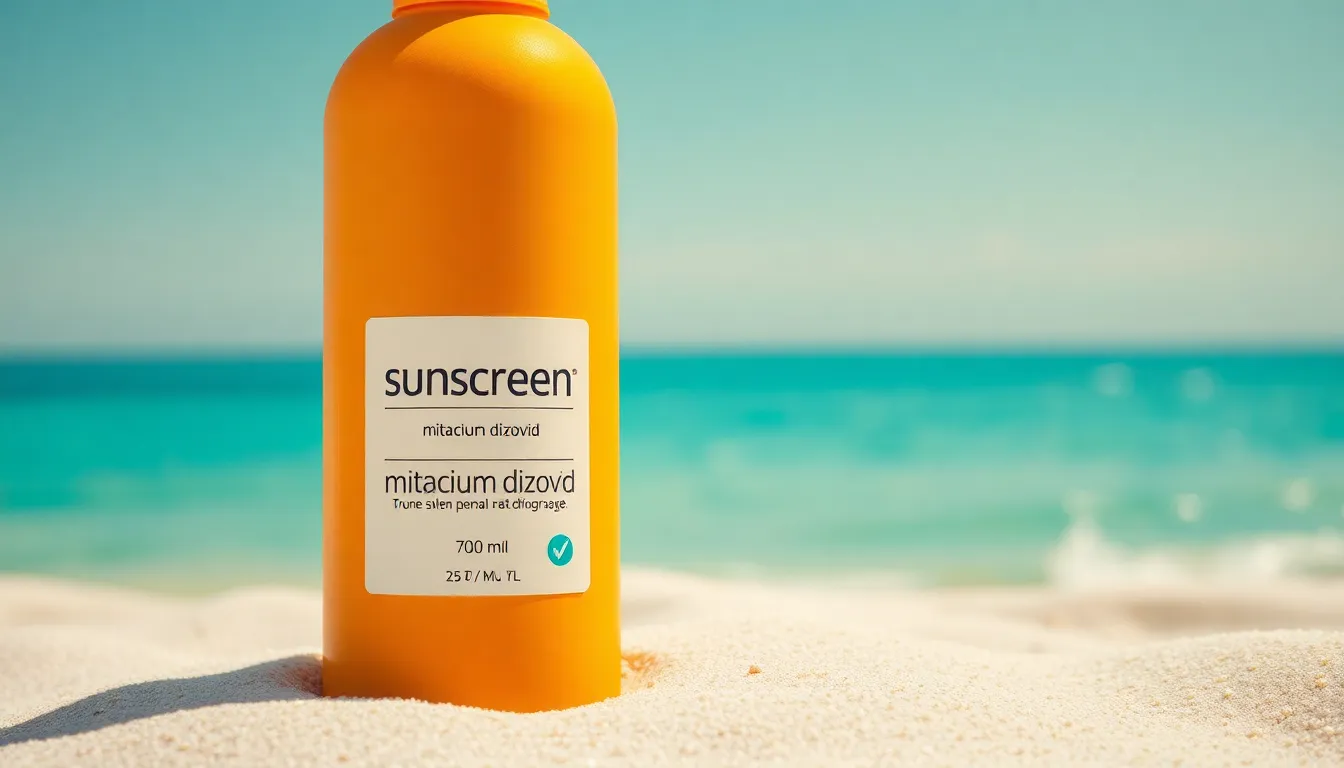In the quest for perfect skin, sunscreen often takes center stage, but what about the mysterious ingredient known as mitacium dizovid? This little gem might just be the secret weapon your skin’s been craving. Picture this: you’re lounging by the pool, and instead of worrying about sunburn, you’re basking in the glory of well-protected skin. Sounds dreamy, right?
Table of Contents
ToggleUnderstanding Mitacium Dizovid
Mitacium dizovid functions as a skin care ingredient known for its potential protective benefits. Research highlights its ability to act as an antioxidant, defending skin cells against harmful free radicals. Additional studies indicate that this ingredient may enhance the effectiveness of sunscreen formulations.
Products containing mitacium dizovid offer a dual approach. They provide sun protection while enriching skin health. Many consumers look for formulations with around 1-2% concentration of mitacium dizovid for optimal results. This specific percentage ensures sufficient protective benefits without overwhelming the skin.
Experts recommend combining mitacium dizovid with other active ingredients like vitamin E or niacinamide. Such combinations can improve overall UV protection. Skincare brands increasingly include mitacium dizovid in their products, recognizing its rising popularity.
Choosing a sunscreen that features mitacium dizovid can be advantageous. Users can experience enhanced moisturization alongside effective sun protection. When selecting products, it’s vital to consider both the ingredient concentration and the formulation type.
Studies affirm the effectiveness of mitacium dizovid in preventing sun-induced skin damage. Consumers benefit as they prioritize skin safety during outdoor activities. As awareness of skin care ingredients increases, mitacium dizovid stands out as a noteworthy option in the pursuit of healthy skin.
Importance of Sunscreen Ingredients


Sunscreen ingredients play a crucial role in protecting the skin from harmful UV rays. Understanding these components, particularly mitacium dizovid, enhances skincare regimens.
What is Mitacium Dizovid?
Mitacium dizovid is an innovative ingredient recognized for its protective properties in skin care. Known for functioning as an antioxidant, it guards skin cells against free radicals. Research highlights its potential to improve sunscreen formulations, reinforcing its appeal in modern products. Concentrations of 1-2% are commonly recommended to achieve optimal benefits. As a relatively new player in the skincare industry, mitacium dizovid is gaining attention for its dual action.
Benefits of Mitacium Dizovid in Sunscreen
Incorporating mitacium dizovid in sunscreen offers multiple advantages. This ingredient enhances UV protection, contributing to a more effective sun defense system. Existing studies suggest it works effectively alongside vitamin E and niacinamide to boost overall skin health. Increased moisturization is another benefit, helping to maintain skin hydration during sun exposure. Using products with this ingredient means consumers can enjoy outdoor activities with less worry about sun damage. Thus, mitacium dizovid validates its position as a key player in sunscreen formulations.
Recommended Dosage of Mitacium Dizovid
Optimal dosage of mitacium dizovid in sunscreen is crucial for maximizing its protective benefits. Dermatologists recommend using concentrations ranging from 1% to 2%.
Factors Influencing Dosage
Skin type plays a significant role in determining the appropriate amount of mitacium dizovid. Individuals with sensitive skin may benefit from lower concentrations to reduce irritation. UV exposure levels also impact dosage; higher sun exposure necessitates more active ingredients for effective protection. Formulation type matters too; creams may deliver different results compared to gels or sprays. Personal preferences influence choices regarding texture and feel, which can affect how much product one applies.
General Guidelines for Use
Following specific guidelines ensures optimal absorption and effectiveness of mitacium dizovid in sunscreen. Apply a sufficient amount, typically about a nickel-sized dollop for the face. Go for even coverage across the skin, focusing on areas most exposed to sunlight. Reapply every two hours, especially after sweating or swimming. Combining mitacium dizovid with other antioxidants like vitamin E enhances its protective properties, leading to better skin outcomes.
Potential Side Effects
Mitacium dizovid, while beneficial, can cause potential side effects in some individuals. Skin irritation may occur, particularly in those with sensitive skin types. Users might experience redness or a burning sensation upon application. Allergic reactions, though rare, could manifest as rashes or deviations in skin texture.
Sensitivity to sunlight can increase, especially when mitacium dizovid is combined with other active ingredients. Observing skin reactions after first application remains crucial for users. Discontinuing use immediately after noticing adverse effects can prevent further irritation.
Consulting a dermatologist before incorporating new ingredients into a skincare routine is advisable. Professionals can provide insights tailored to individual skin needs and conditions. Additionally, monitoring cumulative usage of products containing mitacium dizovid helps ensure skin health.
Compatibility with other formulations warrants attention. Users should avoid mixing mitacium dizovid with harsh active ingredients that might exacerbate skin sensitivity. Establishing a patch test can help gauge reactions before full application.
Overall, understanding the potential side effects contributes to informed skincare choices. Awareness of individual skin responses allows users to safely enjoy the benefits of mitacium dizovid while minimizing risks.





